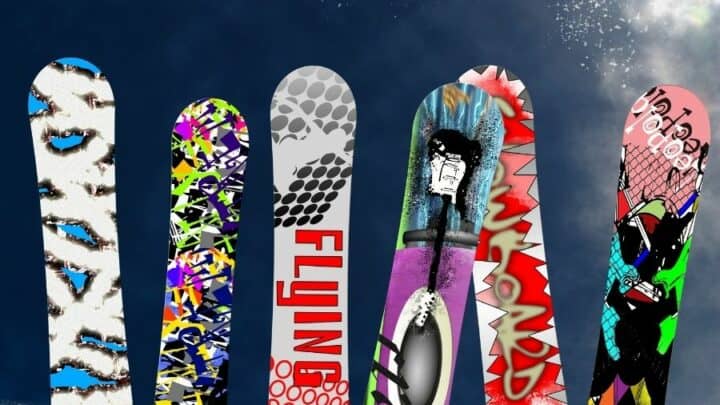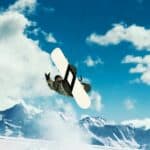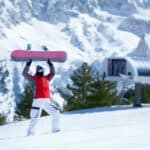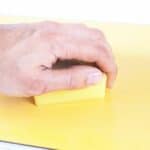Years of trial and error have taught us a variety of methods to determine the correct size of snowboard for a snowboarder.
Some people still use conventional methods of sizing. They stand a snowboard on its end and see if it measures from foot to chin.
Other people use formulas to calculate the size they need. Both methods are good, but they don’t always address all the essential factors when selecting a snowboard.
Table of Contents
How to Measure a Snowboard
You calculate the size of a snowboard using basic measurement criteria such as your weight or your height, as well as the snowboard’s width. However, you must also consider several other conditions, such as your gender and age, as well as the type of snow to ride on, your skill level, and your riding style.
Tip: Use a standard chart to narrow down the size options of your new snowboard based on weight or height.
Measure a Snowboard Using your Weight
The most important determiner of the length of a new snowboard is your weight. A snowboard that is compatible with your bodyweight enables you to ride to the maximum of your ability without worrying about losing control.
If you are heavy and you choose a snowboard that is too short for you, your snowboard will quickly become unmanageable as you hit high speeds.
Also, as a heavier rider, if you choose a soft, short snowboard, this will lead to wipe-outs and over-flexing.
Tip: You can get a longer snowboard even if you are a heavy person. Longer boards will help you to slide over the powder faster by keeping the snowboard’s nose above the snow.
Longer snowboards are stiffer and therefore deliver added stability and better control.
If you are a light individual, and it turns out you are too light for your snowboard, you will have trouble controlling and flexing it.
Tip: If your background is skating on the streets or in parks, you can risk reducing the size of your snowboard to boost your mobility over the snow.
Do this to get the style and feel on the snow that will be more like the skating action you are accustomed to.
Measure a Snowboard Using your Height
While height is the most obvious measurement when choosing the length of a snowboard, it may not be the best. Still, snowboards have been sized by height since their establishment, and there’s no end to that in sight.
There have been various ways to size snowboards by height.
Short Boards
If you use the traditional method, a shorter board should be just about reaching your chin when it is positioned on its end.
These boards are great for freestyle and beginner riders.
Long Boards
The length of a longer snowboard can reach anywhere between your nose and nudging just over your head. Longer snowboards are well suited for high-speed and powdered snow conditions.
Neither of these two preceding policies is an exact guideline, so they’re not as useful as other methods. Nevertheless, many riders use one of them when buying a board.
Most snowboarders ride snowboards that are 85–92% of their height. Many snowboarders use that fact to calculate their snowboard size using a simple formula:
Snowboard Length = Snowboard Ratio of height x 2.54 x height (inches)
So, for example, consider a 5 feet 10 inches tall snowboarder who is using a snowboard ratio of height of 88% (0.88). S/he will plug the numbers into the formula above like this:
Snowboard Length = 0.88 x 2.54 *70 = 156 inches
Although this formula might seem like a foolproof way to get a conclusive answer once and for all, it really isn’t. The height that this formula returns is only a starting point.
While height is important, don’t forget that you must also consider weight, your riding style, and your experience level among other factors.
Furthermore (if you’re one of those who has the self-discipline to do this), you really ought to read the manufacturer’s technical specifications for each snowboard.
You will be in the minority of snowboarders if you pay this degree of attention to detail, but you will be better informed about your snowboard than most of your peers.
Measure a Snowboard by Its Width
An important consideration in sizing up a snowboard that is often overlooked is its width.
A snowboard’s width is commonly measured at its narrowest point, which is normally at its middle. This measurement is in relation to your boot’s size.
Your boot should hang a touch over the sides of your snowboard. Be careful! Too much or too little will cause problems.
For example, with snowboards that are too narrow for your boot, toe and heel drag are common complications. This is terrible news, causing you to not only slow down but maybe even having to bail.
Although minor toe drag can be managed, if your heels or toes get caught on the edge of a feature or the lip of a kicker… Well, let’s just say you’ll probably wish it hadn’t.
Tip: Although the width is essential, don’t automatically assume you have to get a wider snowboard.
If you are lucky, all you might have to do is simply adjust your bindings to allow your toes to rise above the side of the snowboard.
Frequently Asked Questions about How to Measure a Snowboard
Are there any differences between advanced and beginner boards?
The answer could be “Yes” because beginners should choose snowboards that are a little short for going faster and easier handling. The answer could also be “No” because many advanced freestyle snowboarders use softer, shorter snowboards for better tricks performance.
Which size of snowboard should you get?
This is a common question heard over and over again in snowboard shops. Fortunately, although there is no one right answer, selecting a suitable snowboard for yourself is straightforward once you are familiar with the most important aspects of snowboards.
Afterword: How to Measure a Snowboard
With the help of the information in the article above and the snowboard sizing charts given in the links, you should be able now to choose the best board for your physical build and snowboarding situation.
That said, keep in mind that everybody is unique, and everyone has their own expectations of their snowboard.
Use all the information presented here and in the charts, but remember to use your intuition and ideas.




